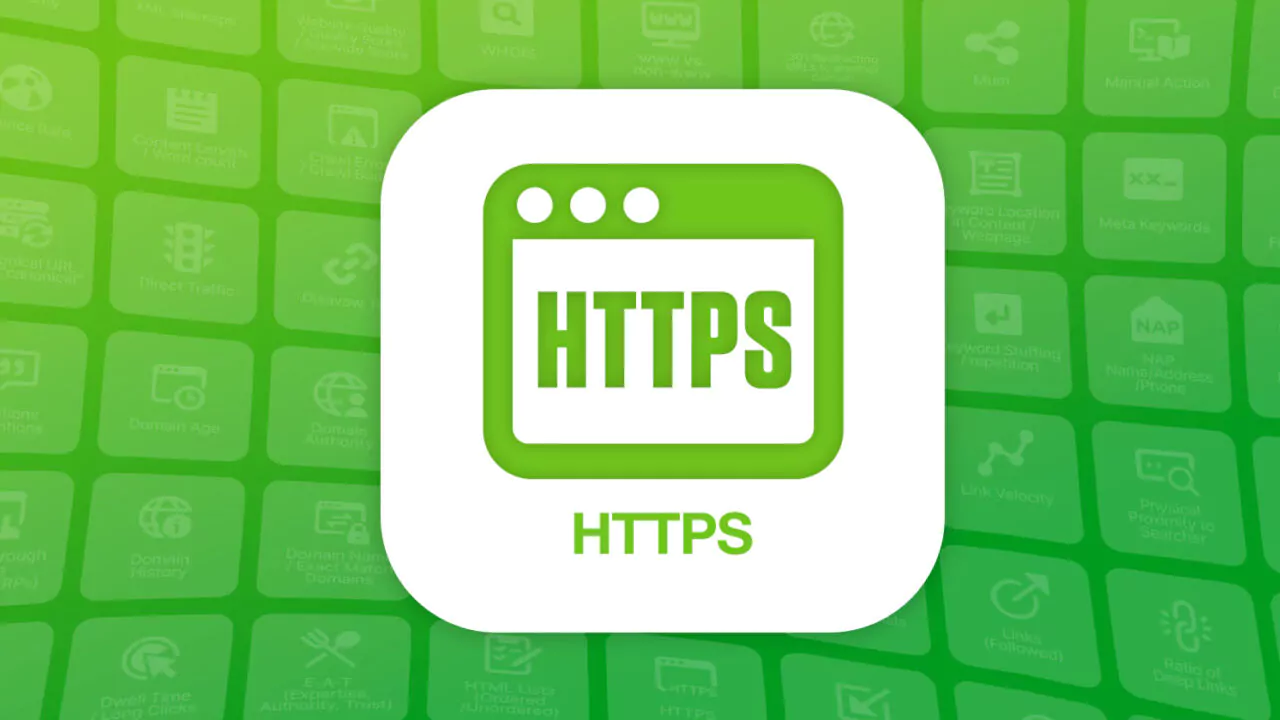HTTPS as a Ranking Signal: More Than Just Security

When it comes to SEO, many people focus on keywords, content, and backlinks. While these are important, there’s a technical factor that’s just as critical but often overlooked: HTTPS.
HTTPS isn’t just about securing data—it’s also about earning trust from both users and search engines. In fact, Google has confirmed that HTTPS is a ranking signal, and it’s become an expected standard across the web.
In this article, we’ll explain what HTTPS is, why it matters for SEO, and how making the switch helped a hotel booking website boost both its search visibility and customer conversions.

What Is HTTPS?
HTTPS stands for Hypertext Transfer Protocol Secure. It’s the secure version of HTTP, the protocol used to transfer data between a user’s browser and a website.
When a website uses HTTPS:
-
Data is encrypted, protecting sensitive information like login credentials or payment details.
-
A padlock icon appears in the browser’s address bar, signaling to users that the site is secure.
-
It shows that the website has a valid SSL certificate, which is required to establish a secure connection.
Simply put, HTTPS ensures that any data sent between your website and your users stays private.
Why Google Prefers HTTPS
Google’s mission is to make the web safer. That’s why, since 2014, it has included HTTPS as a ranking signal in its algorithm. Sites that use HTTPS are viewed as more trustworthy, and that trust translates into higher visibility in search results.
Here’s how HTTPS supports SEO directly and indirectly:
1. Improved Search Rankings
All other factors being equal, a website using HTTPS may outrank a similar site using HTTP. While HTTPS alone won’t shoot you to the top of Google, it can give you an edge over competitors who haven’t made the switch.
2. User Trust and Credibility
Users are more likely to stay on a site that feels secure—especially if they’re asked to enter personal information. Seeing the padlock icon reassures visitors that their data is protected.
3. Reduced Bounce Rates
If users see a “Not Secure” warning in their browser, they may leave immediately. A secure site keeps visitors engaged longer, improving user experience signals that can benefit SEO.
4. Better Referral Data
HTTPS preserves referral data in Google Analytics. Without it, traffic from other HTTPS sites may appear as “direct” traffic, making your reports less accurate.
Real Use Case: Hotel Booking Site Sees a Boost After Switching to HTTPS
A travel company that operated a hotel booking platform was seeing good traffic from search, but their form conversion rate—especially for inquiries and reservations—was lower than expected.
Their site was still running on HTTP, and browsers had started marking it as “Not Secure.” Some users even contacted support to ask if the site was safe to use.
What they did:
-
Installed an SSL certificate and migrated the entire site to HTTPS.
-
Updated internal links and canonical tags to point to the secure version.
-
Implemented 301 redirects from HTTP to HTTPS to preserve link equity.
-
Resubmitted their sitemap via Google Search Console.
The results:
-
Within 4 weeks, they noticed an increase in search rankings, particularly for competitive local keywords.
-
Form submissions rose by over 25%, as users felt more confident booking directly on the site.
-
The site’s bounce rate dropped, especially on mobile devices where browser warnings were more prominent.
This simple technical change had a big impact—not just on SEO, but on user behavior and revenue.
How to Know If Your Site Uses HTTPS
It’s easy to check:
-
Visit your website and look at the address bar. Do you see a padlock icon?
-
Does the URL start with https:// instead of http://?
-
If you’re using Google Search Console, you can confirm that the secure version is being indexed.
If your site is still using HTTP, you’ll likely see a “Not Secure” message in modern browsers.
How to Switch from HTTP to HTTPS
While the process can vary depending on your platform and hosting provider, here are the key steps:
-
Purchase or enable an SSL certificate
Many hosting providers offer free SSL certificates via Let’s Encrypt. -
Install the certificate on your server
This step is usually handled by your hosting provider. -
Update all internal links to use HTTPS
This ensures consistency and avoids mixed content warnings. -
Redirect HTTP URLs to HTTPS
Set up permanent (301) redirects to ensure users and search engines reach the secure version. -
Update Google Search Console
Submit the HTTPS version of your sitemap and monitor for crawl errors. -
Monitor analytics and rankings
Track performance over time to ensure traffic and conversions are stable or improving.
Common HTTPS Migration Mistakes to Avoid
-
Forgetting to redirect HTTP URLs
Without redirects, you may split SEO value between two versions of your site. -
Leaving mixed content (HTTP assets) on HTTPS pages
This can cause security warnings and block elements from loading. -
Not updating canonical tags, sitemaps, and robots.txt
These signals guide search engines—make sure they reflect the new URL format. -
Failing to update third-party tools and links
Make sure your marketing tools, social profiles, and email templates point to the secure version.
Final Thoughts
HTTPS is more than a technical detail—it’s a signal of trust, security, and professionalism. Google knows it, your users know it, and your competitors know it. If you haven’t made the switch yet, it’s time.
Migrating to HTTPS strengthens your SEO, improves analytics, boosts conversions, and reassures every visitor that they’re in safe hands.
In a digital landscape where trust and speed are everything, HTTPS is one of the simplest—and most impactful—ways to gain a competitive edge.


Subscribe to follow product news, latest in technology, solutions, and updates
Other articles for you



Let’s build digital products that are simply awesome !
We will get back to you within 24 hours!Go to contact us Please tell us your ideas.
Please tell us your ideas.







